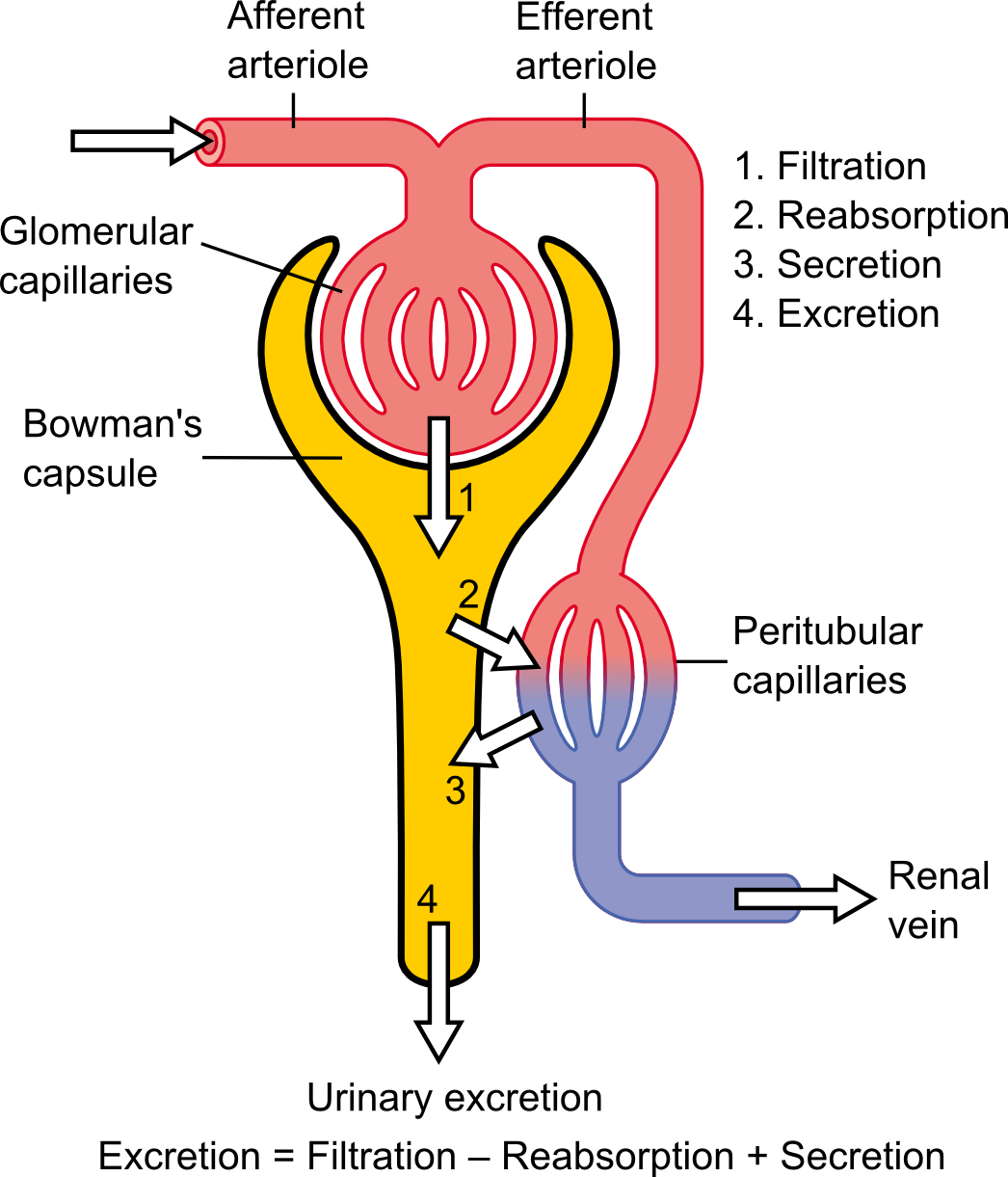
Where does the Ultrafiltration process take place?
Answer
572.7k+ views
Hint: In general, Ultrafiltration is a purification process which is pressure driven that separates particulate matter from soluble compounds using an ultrafine membrane.
Complete Answer:
- Ultrafiltration occurs in the Bowman’s capsule of the kidney. Bowman’s capsule is also called the capsula glomeruli or glomerular capsule. It is a part of the nephron ( functional unit of kidneys ).
- Bowman’s capsule is a double walled cup like structure . It contains a dense capillaries network called glomerulus.
- Blood flows in these capillaries through the afferent arterioles and leaves through the efferent arterioles.
Ultrafiltration: It is a pressure driven process.
- In this process, the high hydrostatic pressure forces small molecules such as water, glucose , amino acids, NaCl and urea in a tubular fluid through the filter across the basement membrane of Bowman’s capsule. This process is called the Ultrafiltration.
- The resulting fluid will be virtually free of large proteins and blood cells and is called an ultrafiltrate of glomerular filtrate.
- Glomerular pressure is about 75mm of mercury.
- The components of filtrate such as sodium ions, potassium ions, etc. are then reabsorbed in the renal; tubule.

Selectivity of ions by glomerulus layers:
- The structure of layers of glomerulus are selectively permeable.
For example – small ions such as potassium ion, sodium ion pass freely while larger proteins such as hemoglobin and albumin cannot pass through it.
- Also negatively charged molecules will pass through in less number than that of positively charged ions.
Note: Ultrafiltration is a very specific process. It is a process by which metabolic wastes are separated from the blood and urine is formed.
Complete Answer:
- Ultrafiltration occurs in the Bowman’s capsule of the kidney. Bowman’s capsule is also called the capsula glomeruli or glomerular capsule. It is a part of the nephron ( functional unit of kidneys ).
- Bowman’s capsule is a double walled cup like structure . It contains a dense capillaries network called glomerulus.
- Blood flows in these capillaries through the afferent arterioles and leaves through the efferent arterioles.
Ultrafiltration: It is a pressure driven process.
- In this process, the high hydrostatic pressure forces small molecules such as water, glucose , amino acids, NaCl and urea in a tubular fluid through the filter across the basement membrane of Bowman’s capsule. This process is called the Ultrafiltration.
- The resulting fluid will be virtually free of large proteins and blood cells and is called an ultrafiltrate of glomerular filtrate.
- Glomerular pressure is about 75mm of mercury.
- The components of filtrate such as sodium ions, potassium ions, etc. are then reabsorbed in the renal; tubule.

Selectivity of ions by glomerulus layers:
- The structure of layers of glomerulus are selectively permeable.
For example – small ions such as potassium ion, sodium ion pass freely while larger proteins such as hemoglobin and albumin cannot pass through it.
- Also negatively charged molecules will pass through in less number than that of positively charged ions.
Note: Ultrafiltration is a very specific process. It is a process by which metabolic wastes are separated from the blood and urine is formed.
Recently Updated Pages
Master Class 11 Business Studies: Engaging Questions & Answers for Success

Master Class 11 English: Engaging Questions & Answers for Success

Master Class 11 Computer Science: Engaging Questions & Answers for Success

Master Class 11 Social Science: Engaging Questions & Answers for Success

Master Class 11 Maths: Engaging Questions & Answers for Success

Master Class 11 Biology: Engaging Questions & Answers for Success

Trending doubts
Differentiate between an exothermic and an endothermic class 11 chemistry CBSE

10 examples of friction in our daily life

One Metric ton is equal to kg A 10000 B 1000 C 100 class 11 physics CBSE

Difference Between Prokaryotic Cells and Eukaryotic Cells

State the laws of reflection of light

Explain zero factorial class 11 maths CBSE




